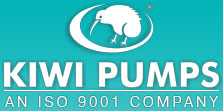
Pumps Information » Syringe Pumps
Syringe Pumps
Syringe Pumps are used to deliver precise amounts of fluid at specific time intervals. There are two main types of products: infusion pumps and withdrawal pumps. Infusion pumps are used to administer relatively small amounts of fluids at high, but controlled pressures. Withdrawal pumps are used to remove fluid samples automatically, typically in medical or pharmaceutical applications. Specifications for both types of syringe pumps include minimum and maximum discharge flow, syringe size, number of pumps per assembly, minimum and maximum step rate, accuracy, reproducibility, physical dimensions and weight.
Power sources, applications, features, media, and certifications are additional considerations.There are many different power sources for syringe pumps. Manual pumps are designed to be driven by hand or foot power. Pneumatic pumps use a compressed air source. Pump-only mechanisms and solar-powered products are also available. Electrically-powered syringe pumps use either direct current (DC) or alternating current (AC) waveforms. DC pumps typically operate with 6, 12, 24, or 32 VDC. AC pumps use single-phase or three-phase power, depending on the requirements of the application. Single-phase syringe pumps operate with 100, 115, 200, or 230 VAC.
Three-phase syringe pumps operate with 230 to 460 VAC, or 480 to 890 VAC. Syringe pumps differ in terms of applications and features. General-purpose products are not designed for a specific industry. Specialized pumps are rated for agricultural, cryogenic, dairy, food and beverage processing, maritime, medical, pharmaceutical, or semiconductor manufacturing applications. In terms of features, some syringe pumps are explosion proof, corrosion resistant, hygienic, portable, or run-dry capable. Others include a control panel, battery backup, power cord, pressure gauge, strainer or filter. Washdown duty pumps are designed to operate in wet environments such as food processing plants and dairies. Sanitary pumps meet guidelines established by regulatory agencies such as the U.S. Food and Drug Administration (FDA).
Suppliers of syringe pumps specify the media which pumps can handle and the certifications and approvals that products bear. Syringe pump media include acids, chemicals, coolants, combustible fluids, corrosive agents, gasoline or diesel fuel, non-liquid gas or air, ground water, hazardous materials, high viscosity fluids, liquid metal, oils, potable water, salt water, adhesives, and high temperature media. In terms of certifications, syringe pumps may bear the UL Mark and/or the CSA Mark. Underwriters Laboratories (UL) is a non-profit organization that tests components, systems, and materials according to its published standards for safety. Products that bear a CSA Mark have been tested by the Canadian Standards Association (CSA) and meet applicable standards for safety and/or performance.
